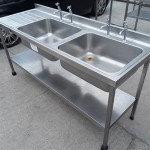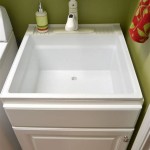The Submerged Truth: What Caused the Titanic to Sink
The sinking of the RMS Titanic on April 15, 1912, remains one of the most infamous maritime disasters in history. The loss of over 1,500 lives shocked the world and spurred significant advancements in maritime safety. While the immediate cause was the ship's collision with an iceberg, a confluence of factors contributed to the tragedy, stemming from design flaws to human error and societal pressures.
The narrative surrounding the Titanic often focuses on the iceberg, but a deeper examination reveals a more complex sequence of events. Understanding the contributing factors provides a comprehensive picture of what truly condemned the “unsinkable” ship to its watery grave. It’s not a simple question, but a mosaic of interconnected circumstances.
Substandard Rivets and Hull Integrity
One of the most heavily debated contributing factors to the Titanic's rapid sinking is the quality of the rivets used in the ship's hull. Recent metallurgical analysis has suggested that the rivets used in the bow and stern sections of the Titanic were made from lower-grade iron, containing a higher slag content than those used in the central section. This "slag" refers to impurities left over from the iron smelting process. These impurities made the rivets more brittle and weaker compared to higher-quality wrought iron rivets.
The reason for this supposed difference in rivet quality stems from the differing levels of stress and strain expected in various parts of the ship. Higher-quality rivets were deemed necessary for the central section, where the ship would experience the greatest flexing and stress during its voyages. Conversely, the bow and stern sections, believed to be subjected to less structural strain, were fitted with the purportedly inferior rivets to save costs and potentially speed up construction.
The implications of these weaker rivets are significant. When the Titanic struck the iceberg, the force applied to the hull caused the rivet heads to shear off in some areas. This shearing dramatically weakened the hull plating, allowing the ice to force its way into the ship. Had higher-quality rivets been used throughout the hull, it is possible that the damage might have been less extensive, and the flooding rate reduced, potentially buying crucial time for evacuation and survival.
While this theory is still debated among experts, the evidence suggests a possible correlation between rivet quality and the extent of the damage inflicted by the iceberg. Comprehensive analysis of recovered rivets and historical records continues to provide further insights into this critical aspect of the disaster.
Insufficient Lifeboats and Regulatory Neglect
The number of lifeboats carried on the Titanic was grossly inadequate for the number of passengers and crew onboard. The Titanic was designed to comply with the British Board of Trade regulations of the time, which based the required number of lifeboats on the ship's tonnage rather than the number of people it carried. This outdated regulation meant that the Titanic, despite its massive size and passenger capacity, only carried enough lifeboats for approximately half the people on board.
The White Star Line, the Titanic's owner, opted for a design that prioritized deck space and aesthetics over lifeboat capacity. This decision reflected a prevailing belief in the "unsinkability" of the Titanic and a desire to maximize revenue generation by utilizing valuable deck space for passenger amenities. This focus on profitability overshadowed safety considerations, creating a tragic imbalance between the ship's capacity and the available means of escape.
Furthermore, the lifeboat drill conducted on the Titanic was perfunctory and insufficient. The crew was not adequately trained in the proper launching procedures for the lifeboats, and many passengers were unaware of the lifeboat locations or procedures. This lack of preparedness contributed to the chaos and confusion that ensued after the collision, hindering the efficient deployment of the lifeboats and exacerbating the loss of life. The inadequacy of lifeboat drills reflected a systemic failure to prioritize safety preparedness among the ship's crew and passengers.
The combination of insufficient lifeboats and inadequate training proved to be a deadly combination. The regulatory framework at the time, the choices made by the White Star Line, and the lack of preparedness all contributed to a catastrophic outcome that highlighted the urgent need for comprehensive revisions to maritime safety standards.
Excessive Speed and Negligence in Iceberg Warnings
The Titanic was travelling at a speed of approximately 22 knots (25 mph) in known iceberg-infested waters. This high speed, driven by a desire to maintain the ship's schedule and generate publicity for its maiden voyage, significantly reduced the amount of time available to react to any potential hazards. While the captain was aware of the presence of icebergs in the area through numerous warnings received from other ships, the decision was made to maintain a relatively high speed.
The reasons behind this decision are multifaceted. Firstly, there was a prevailing culture of speed and competition among transatlantic liners, with shipping companies vying for the fastest crossing times. Secondly, the captain may have underestimated the severity of the iceberg threat or overestimated the capabilities of the Titanic. Thirdly, the desire to avoid delays and maintain the ship’s reputation for punctuality likely played a role in the decision-making process.
The Titanic received multiple iceberg warnings throughout the day of April 14. However, some of these warnings were either not properly relayed to the bridge or were dismissed due to the prevailing complacency surrounding the ship's perceived invincibility. The failure to adequately heed these warnings represented a critical breakdown in communication and risk assessment.
The combination of excessive speed and negligence in iceberg warnings created a dangerous situation that ultimately led to disaster. Had the Titanic been travelling at a slower speed or had the iceberg warnings been taken more seriously, the collision might have been avoided altogether, or at least the impact significantly reduced, potentially preventing the subsequent sinking. Speed, in this context, became a crucial element in the chain of events leading to the tragic loss of life.
Furthermore, the lack of effective communication within the crew and between the crow's nest, bridge, and engine room compounded the errors. By the time the iceberg was spotted, the distance was too short and the reaction too slow. The ship’s turning capabilities at that speed were insufficient to avoid the collision entirely. This delay and the inability to react with adequate speed underscore the significance of the speed factor in the overall narrative of the Titanic disaster. The combination of high speed and poor communication proved to be a fatal flaw in the events leading up to the sinking.
The confluence of substandard materials, regulatory loopholes, and human decisions culminated in a catastrophic event that exposed deep-seated flaws in maritime safety practices. Each element, from the rivets to the speed of travel, played a specific role in the tragedy. Understanding these multifaceted causes offers a sobering lesson in the importance of prioritizing safety over profit, adhering to rigorous standards, and embracing a culture of preparedness in all endeavors, especially those involving human life.

Titanic How She Sank Georgia Public Broadcasting

How Did Titanic Sink The Complete Physics

Sinking Of The Titanic Wikipedia

Titanic Sinks

The Real Reasons Titanic Sank Youtube

Why And How The Titanic Sank Infographic Live Science

Causes And Effects Of The Rapid Sinking Titanic

Why Did The Titanic Sink Scientific Reasons Simscale

Why Did The Titanic Sink History

Today In History The Titanic Sinks 1912 Collection







